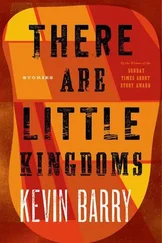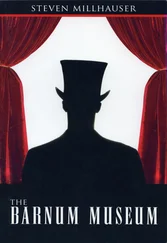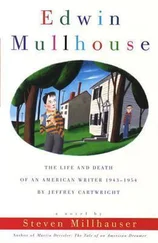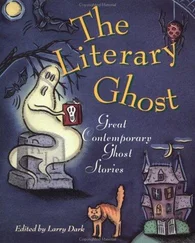Although Pinney remained an unwavering admirer of Moorash’s art, and a close friend to the very end — Moorash was to say that Pinney was the only friend he ever had — nevertheless the friendship was subject in an unusual degree to unhealthy strains and tensions. Pinney had courted Elizabeth Moorash and lost; and after a struggle he had resigned himself, with a certain good-natured wistfulness, to the not unattractive role of rejected lover. When Moorash fell violently in love with Sophia Pinney in the summer of 1843, William cannot have been unaware of the almost comical repetition of a pattern, including the rejection of the suitor. But a difference quickly revealed itself. That difference was the difference in temperament between Pinney and Moorash — for Moorash was not a man to resign himself good-naturedly to anything. His passion for Sophia, though he was able to tamp down its outward expression for the sake of being in her company, remained strong, tormenting, and obsessive. Pinney, a sensitive student of Moorash’s moods, was therefore forced to endure the continual sense of his friend’s suppressed passion, of his suffering and disappointment — and this from the very man whom he partially blamed for his own well-mastered suffering and disappointment. Moreover, Moorash’s passion, if successful, would have meant for William the loss of his own sister, so that he was continually threatened by a kind of theft. Meanwhile his relation to Elizabeth was to undergo another change. As her illness became increasingly apparent, William drew closer to her. Often he sat with her for long afternoons while Moorash, deeply grateful to his friend, painted in the barn. But William’s new closeness to Elizabeth rekindled his old sense of grievance: in large part he came to blame Moorash for Elizabeth’s illness. For, as Sophia put it in a letter to Fanny Cornwall, if Elizabeth had been allowed to flourish as a wife and mother, to establish her own life independent of her brother’s, would she not have been far healthier than under the conditions of “an unnatural attachment”? (Sophia appears to be blind to her own life with her brother, but in fact she always insisted on a difference: Elizabeth lived permanently with Edmund in an isolated cottage, whereas Sophia joined her brother only in the warm months and otherwise lived with a maiden aunt in Boston.) But Elizabeth’s illness had a further effect. Sophia, despite her apparent insensitivity and even hostility to Moorash himself, was profoundly responsive to Elizabeth’s moods; and as Elizabeth’s headaches grew more serious, and her health more frail, Sophia herself began to experience sharp, dizzying headaches that left her prostrate for entire afternoons. William, often with two sick women to attend to, could not prevent himself from tracing the harm to his friend. At times he wondered whether his duty lay in protecting Sophia from the ailing Elizabeth; and a desire arose in him to escape from all this, to vanish somewhere into a peaceful place, even as his heart drew him to Elizabeth’s side.
Such strains and dangerous tensions do much to account for the darker aspect of the portrait of William Pinney, for Moorash was acutely sensitive to Pinney’s moods and cannot have failed to sense his friend’s secret doubts and disapprovals. It is not surprising to learn that he showed the portrait to Pinney (on 14 August 1845); Elizabeth witnessed the event. Pinney looked at the painting a long time in silence. He then turned, threw Moorash “such a look as I cannot describe, for it was scarcely a human look,” and walked away without a word. It was the only time he had failed to say something about one of his friend’s paintings. As for Moorash, he turned to Elizabeth with a look of “angry triumph” and said: “See! He’s hit!”
[24]
SOPHIA PINNEY
1844–46?
Oil on canvas, 34 1/2 × 28 in.
The earliest direct mention of a portrait of Sophia is in Elizabeth’s Journal for May 1844, although it is not certain that this is the same canvas as the one Moorash is said to have been working on in December. He appears to have begun two paintings, abandoning the first in favor of the surviving one, which betrays a clear kinship with the portrait of William Pinney and may have been influenced by it. Sophia was shown the painting on 31 August 1845, two and a half weeks after William had viewed his own portrait; nevertheless, Moorash appears to have continued working on it during the next few weeks, setting it aside in late September for the Death Sonata. He may have taken it up again briefly in the early months of 1846; the evidence (see Havemeyer) remains inconclusive.
Again we have the familiar lake and line of hills, this time in the dwindling light of a summer evening. Brooding over the scene, like a spirit of the lake, is an elongated and ethereal Sophia, whose lower body vanishes in the water and whose long upper body winds serpentlike across the lake and back; her flowing hair continues the liquid lines of her body, and is shown winding among the hills. The sweeping lines of the creature, twisting back and forth along the canvas, create a paradoxical feeling of energy and repose, as of a bird in flight; the barely human face is stricken with grief. Elizabeth, who first saw the portrait in company with Sophia, wrote in the Journal (31 August 1845): “As if struck with lightning. E paints the soul directly, unencumbered by outward circumstance. Why does S’s sorrow waken in me such a clash and hubbub of feelings? She looks at me as though I were all princess-white in my coffin. Away! I crave the physic of laughter. Am I grown so cruel?”
Moorash’s vision of a sorrowing Sophia may have been “prophetic,” as Havemeyer puts it, and it may have been a “psychic reversal’ (Altdorfer, p. 216) in which Moorash transposed his own love-sorrow onto the features of the woman who had rejected him, but the facts suggest that Moorash was not making an imaginative leap in the dark. Sophia Pinney may have lacked spiritual greatness, but she was by no means the shallow egotist she has sometimes been made out to be. She did not love Moorash or understand his work, but she behaved admirably in extremely trying circumstances; and in her passionate devotion to Elizabeth she rose above herself to spiritual heights from which she sometimes looked down aghast. Elizabeth was a powerful woman who exercised a kind of spell over Sophia, even more so than Moorash did over William Pinney. Under that spell, Sophia bent her life into a shape that more and more came to resemble the shape of Elizabeth’s life; for although she liked to deny it, Sophia’s decision to live with her brother on Black Lake was clearly influenced by Elizabeth’s decision to live with Edmund. Sophia was as open to Elizabeth as she was closed to Elizabeth’s brother, and we have seen that her acute sensitivity took the disturbing form of empathic suffering. In the early days of Elizabeth’s illness, Sophia liked nothing better than to sit with Elizabeth in her sickroom for whole afternoons, reading aloud to her or remaining absolutely quiet if necessary, tending to her slightest needs, and passing the long hours by knitting a shawl for Elizabeth or rummaging among the supplies in Elizabeth’s sewing table for the thread, thimble, needle, and scissors that she used for mending Elizabeth’s frayed clothes. But as her friend’s illness worsened, Sophia’s own symptoms became more pronounced; and as many letters to Fanny Cornwall and Eunice Hamilton attest, Sophia’s suffering was increased by the knowledge that because of her own prostrating headaches she was not always able to come to Elizabeth’s side. In any case she felt utterly useless in preventing Elizabeth’s decline. She believed passionately that Elizabeth’s life with her brother was harming Elizabeth’s health; and she never forgave Moorash for keeping his sister, as Sophia saw it, from marrying William. Her desire for Elizabeth’s marriage to William appears to have been genuine, although it is difficult to believe she would not have experienced jealousy; it is possible that she desired what she could not permit herself to desire, a life alone with Elizabeth. Certainly, at the very least, she was deeply jealous of Elizabeth’s devotion to Edmund. In the summer of 1845 that devotion took a strange turn, which appears to have shocked Sophia.
Читать дальше












